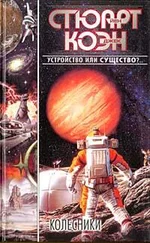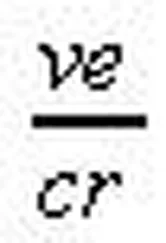Экзопланета— планета, обращающаяся вокруг звезды, отличной от Солнца.
Эксцентриситет— мера того, насколько сплюснутым является эллипс. См. примечание 9.
Электронвольт (эВ) — единица энергии, используемая в физике элементарных частиц и равная 1,6×10↑ –19Дж. См. Джоуль.
Эллипс— замкнутая овальная кривая, образованная растягиванием окружности равномерно в одном направлении.
1. Притяжение на расстоянии
A. Koyré. An unpublished letter of Robert Hooke to Isaac Newton, Isis 43 (1952) 312–337.
A. Chenciner and R. Montgomery. A remarkable periodic solution of the three-body problem in the case of equal masses, Ann. Math. 152 (2000) 881–901.
Анимированная иллюстрация «Орбита для трех тел»: http://www.scholarpedia.org/article/N-body_choreographies
C. Simó. New families of solutions in N -body problems, Proc. European Congr. Math. , Barcelona, 2000.
E. Oks. Stable conic-helical orbits of planets around binary stars: analytical results, Astrophys. J. 804 (2015) 106.
2. Коллапс Солнечной туманности
H. Levison, K. Kretke, and M. Duncan. Growing the gas-giant planets by the gradual accumulation of pebbles, Nature 524 (2015) 322–324.
I. Stewart. The second law of gravitics and the fourth law of thermodynamics, in From Complexity to Life (ed. N. H. Gregsen), Oxford University Press, 2003, pp. 114–150.
K. Batygin and G. Laughlin. On the dynamical stability of the solar system, Astrophys. J. 683 (2008) 1207–1216.
J. Laskar and M. Gastineau. Existence of collisional trajectories of Mercury, Mars and Venus with the Earth, Nature 459 (2009) 817–819.
G. Laughlin. Planetary science: The Solar System’s extended shelf life, Nature 459 (2009) 781–782.
3. Непостоянная Луна
R. C. Paniello, J. M. D. Day, and F. Moynier. Zinc isotopic evidence for the origin of the Moon, Nature 490 (2012) 376–379.
A. G. W. Cameron and W. R. Ward. The origin of the Moon, Abstr. Lunar Planet. Sci. Conf. 7 (1976) 120–122.
W. Benz, W. L. Slattery, and A. G. W. Cameron. The origin of the moon and the single impact hypothesis I, Icarus 66 (1986) 515–535.
W. Benz, W. L. Slattery, and A. G. W. Cameron. The origin of the moon and the single impact hypothesis II, Icarus 71 (1987) 30–45.
W. Benz, A. G. W. Cameron, and H. J. Melosh. The origin of the moon and the single impact hypothesis III, Icarus 81 (1989) 113–131.
R. M. Canup and E. Asphaug. Origin of the Moon in a giant impact near the end of the Earth’s formation, Nature 412 (2001) 708–712.
A. Reufer, M. M. M. Meier, and W. Benz. A hit-and-run giant impact scenario, Icarus 221 (2012) 296–299.
J. Zhang, N. Dauphas, A. M. Davis, I. Leya, and A. Fedkin. The proto-Earth as a significant source of lunar material, Nature Geosci. 5 (2012) 251–255.
R. M. Canup, Simulations of a late lunar-forming impact, Icarus 168 (2004) 433–456.
A. Mastrobuono-Battisti, H. B. Perets, and S. N. Raymond. A primordial origin for the compositional similarity between the Earth and the Moon, Nature 520 (2015) 212–215.
4. Космос как часовой механизм
S. F. Dermott. On the origin of commensurabilities in the solar system II: the orbital period relation, Mon. Not. RAS 141 (1968) 363–376.
S. F. Dermott. On the origin of commensurabilities in the solar system III: the resonant structure of the solar system, Mon. Not. RAS 142 (1969) 143–149.
F. Graner and B. Dubrulle. Titius-Bode laws in the solar system. Part I: Scale invariance explains everything, Astron. & Astrophys. 282 (1994) 262–268.
B. Dubrulle and F. Graner. Titius-Bode laws in the solar system. Part II: Build your own law from disk models, Astron. & Astrophys. 282 (1994) 269–276.
A. J. Ste, N. J. Cunningham, A. B. Shinn, and S. A. Stern. A search for Vulcanoids with the STEREO heliospheric imager, Icarus 233 (2013) 48–56.
5. Небесная полиция
M. Moons and A. Morbidelli. Secular resonances inside mean-motion commensurabilities: the 4/1, 3/1, 5/2 and 7/3 cases, Icarus 114 (1995) 33–50.
M. Moons, A. Morbidelli, and F. Migliorini. Dynamical structure of the 2/1 commensurability with Jupiter and the origin of the resonant asteroids, Icarus 135 (1998) 458–468.
Анимация, показывающая связь между точками Лагранжа и гравитационным потенциалом https://en.wikipedia.org/wiki/File: Lagrangian_points_equipotential.gif
См. анимированную иллюстрацию «Астероиды-троянцы вокруг Юпитера» https://www.exploremars.org/trojan-asteroids-around-jupiter-explained.
F. A. Franklin. Hilda asteroids as possible probes of Jovian migration, Astron. J. 128 (2004) 1391–1406.
http://www.solstation.com/stars/jupiter.htm
6. Планета, поглотившая своих детей
P. Goldreich and S. Tremaine. Towards a theory for the Uranian rings, Nature 277 (1979) 97–99.
M. Kenworthy and E. Mamajek. Modeling giant extrasolar ring systems in eclipse and the case of J1407b: sculpting by exomoons? arXiv:1501.05652 (2015).
F. Braga-Rivas and 63 others. A ring system detected around Centaur (10199) Chariklo, Nature 508 (2014) 72–75.
7. Звезды Козимо Медичи
E. J. Rivera, G. Laughlin, R. P. Butler, S. S. Vogt, N. Haghighipour, and S. Meschiari. The Lick-Carnegie exoplanet survey: a Uranus-mass fourth planet for GJ 876 in an extrasolar Laplace configuration, Astrophys. J. 719 (2010) 890–899.
B. E. Schmidt, D. D. Blankenship, G. W. Patterson, and P. M. Schenk. Active formation of ‘chaos terrain’ over shallow subsurface water on Europa, Nature 479 (2011) 502–505.
P. C. Thomas, R. Tajeddine, M. S. Tiscareno, J. A. Burns, J. Joseph, T. J. Loredo, P. Helfenstein, and C. Porco. Enceladus’s measured physical libration requires a global subsurface ocean, Icarus (2015) in press; doi:10.1016/j.icarus.2015.08.037.
S. Charnoz, J. Salmon, and A. Crida. The recent formation of Saturn’s moonlets from viscous spreading of the main rings, Nature 465 (2010) 752–754.
8. Верхом на комете
M. Massironi and 58 others. Two independent and primitive envelopes of the bilobate nucleus of comet 67P, Nature 526 (2015) 402–405.
A. Bieler and 33 others. Abundant molecular oxygen in the coma of comet 67P/Churyumov — Gerasimenko, Nature 526 (2015) 678–681.
P. Ward and D. Brownlee. Rare Earth , Springer, New York, 2000.
J. Horner and B. W. Jones. Jupiter — friend or foe? I: The asteroids, Int. J. Astrobiol. 7 (2008) 251–261.
9. Хаос в космосе
См. видео http://hubblesite.org/newscenter/archive/releases/2015/24/video/a/
J. R. Buchler, T. Serre, and Z. Kolláth. A chaotic pulsating star: the case of R Scuti, Phys. Rev. Lett. 73 (1995) 842–845.
Читать дальше
Конец ознакомительного отрывка
Купить книгу
![Йэн Стюарт Математика космоса [Как современная наука расшифровывает Вселенную] обложка книги](/books/429584/jen-styuart-matematika-kosmosa-kak-sovremennaya-nau-cover.webp)



![Ричард Фейнман - Фейнмановские лекции по физике. Современная наука о природе [litres]](/books/398001/richard-fejnman-fejnmanovskie-lekcii-po-fizike-sov-thumb.webp)

![Йэн Стюарт - Укрощение бесконечности. История математики от первых чисел до теории хаоса [litres]](/books/419776/jen-styuart-ukrochenie-beskonechnosti-istoriya-matema-thumb.webp)



